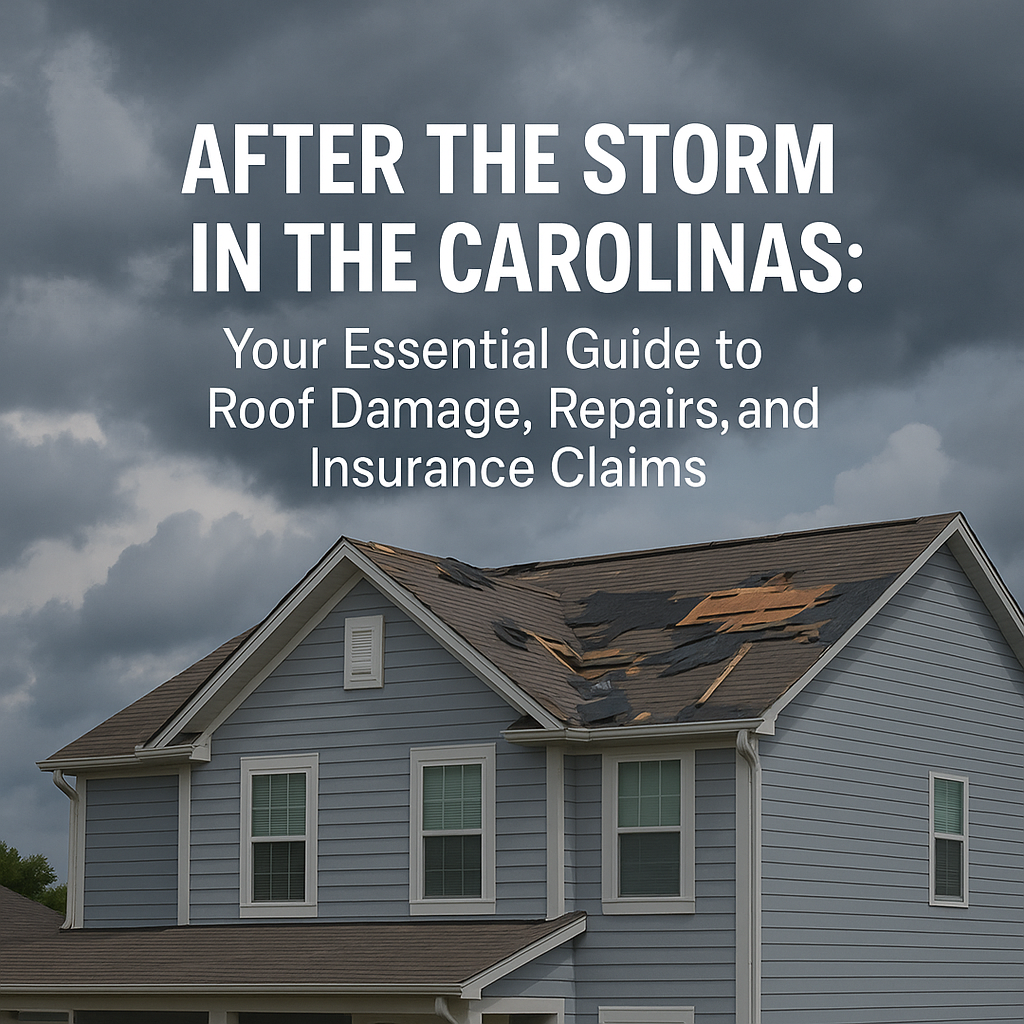Your roof plays a critical role in protecting your home from the elements. However, even the most durable roofs can develop issues that require immediate attention. Recognizing the signs of damage early can save you from costly repairs and protect your property from further harm. In this blog, we’ll discuss common warning signs that indicate it’s time for an emergency roof repair, what you should do next, and tips for finding reliable help.
Table of Contents
- Visible Water Leaks
- Missing or Damaged Shingles
- Sagging Roof Sections
- Mold or Mildew Growth
- Sudden Increase in Energy Bills
- What to Do in an Emergency
- Preventative Tips for Homeowners
- FAQs About Emergency Roof Repairs
1. Visible Water Leaks
Water stains on your ceilings or walls are one of the most obvious signs of roof damage. These leaks often indicate a breach in your roof’s structure that needs immediate attention. Left unchecked, water infiltration can cause extensive damage to insulation, drywall, and even the structural integrity of your home.
2. Missing or Damaged Shingles
High winds, storms, or simply aging can cause shingles to crack, curl, or fall off. Missing shingles expose your roof to water damage and increase the likelihood of leaks. If you notice pieces of shingles on the ground or bare spots on your roof, contact a roofing contractor promptly.
3. Sagging Roof Sections
A sagging roof is a serious issue that may indicate water damage, weakened supports, or excessive weight from accumulated snow or debris. This condition can lead to structural collapse if not addressed immediately. Avoid walking on the roof and seek professional assistance to assess the problem.
4. Mold or Mildew Growth
Unusual mold or mildew growth inside your home can be a sign of excessive moisture caused by roof leaks. These growths can pose health risks to your family and further damage your property. Addressing roof leaks quickly can mitigate these risks and prevent mold from spreading.
5. Sudden Increase in Energy Bills
If your energy bills spike unexpectedly, it might be due to poor roof insulation caused by damage. Holes, gaps, or weakened sections of your roof can allow heat to escape during winter and let warm air in during summer, straining your HVAC system.
6. What to Do in an Emergency
If you suspect significant roof damage, follow these steps to minimize harm:
- Stay Safe: Avoid entering areas with visible damage or leaks.
- Temporary Measures: Use tarps to cover exposed areas and buckets to collect dripping water.
- Contact Professionals: Call a trusted roofing contractor for immediate inspection and repair.
For more information, check out the National Roofing Contractors Association for tips on handling emergency roof repairs.
7. Preventative Tips for Homeowners
Preventing roof emergencies starts with regular maintenance and inspections. Here are a few tips to keep your roof in top condition:
- Schedule annual roof inspections.
- Clean gutters regularly to prevent water pooling.
- Trim overhanging branches to minimize debris.
- Address minor issues before they escalate into emergencies.
Learn more about roof maintenance at This Old House.
FAQs About Emergency Roof Repairs
1. How do I know if roof damage requires immediate attention?
Signs like visible leaks, sagging areas, and missing shingles typically warrant emergency repairs.
2. Can I repair my roof myself in an emergency?
Temporary fixes like tarping may help, but professional repairs are essential for long-term solutions.
3. How much does an emergency roof repair cost?
Costs vary depending on the extent of the damage but usually range between $200 and $1,000 for minor issues.
4. Does insurance cover emergency roof repairs?
Most homeowner insurance policies cover damage caused by storms, hail, or other sudden events. Check with your provider for specifics.
5. How long does an emergency roof repair take?
Repairs can take a few hours to a few days, depending on the severity of the damage and weather conditions.
Conclusion
Recognizing the signs of roof damage early can prevent extensive property loss and costly repairs. Stay proactive by maintaining your roof and addressing issues as they arise. If you’re faced with an emergency, prioritize safety and consult a professional roofing contractor for immediate assistance. Protecting your home starts with keeping your roof in excellent condition.

